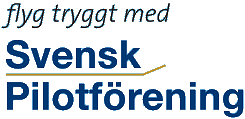Pilot shortage in Europe: Fact or fiction?If you asked any European pilot if there is currently a pilot shortage, most of them would probably laugh. Few pilots in Europe would be willing to agree with media headlines about the ‘looming pilot shortage’. Then how come we are always hearing about the hundreds of thousands of pilots that are needed over the next decades? Why has the ‘pilot shortage looming on the horizon’ for so many years, never materialised?
The answer is simple and staring us in the face: There is no pilot shortage.
To date in Europe, there is no evidence for a deficit in pilot numbers. ECA estimates that in various European Member States there is a large pool of pilots – or rather licence holders – who are either unemployed or unable to find a flying job that provides a reasonable lifestyle. Figures from our national pilot associations indicate approximately an average 15% unemployment rate among pilots in Europe. The lack of data from national Civil Aviation Authorities, EASA and Member States makes it difficult to keep track of the total number of European licence holders vs actively flying pilots.
Pilot supply exceeds the number of pilot jobs needing to be filled, has done for decades, and shows no sign of restriction in the foreseeable future.
In fact, there are thousands of European pilots who have gone abroad as ‘expats’ to find acceptable terms and conditions. There are thousands of licence holders who complete basic training, but then look at starting conditions in airlines and conclude they are better off in another job or sector. There are thousands of pilots being worked to the limit of fatigue rules who do not return to flying following a burnout or parental leave.
There are large numbers of available licenced pilots who are deterred from filling available positions, and they are ready to be recruited by any operator wishing to actively do so – under the right conditions.
The ‘pilot shortage’ debate is an oversimplified way to brand the ‘coverup’ of many structural problems in the industry. What may be perceived – or portrayed – by some of the industry as a ‘pilot shortage’ is in fact part of a complex discussion on accessing pilot supply, including by weakening regulation to unlock pilot supply for certain airlines at lower cost, and more profitable for some training organisations.
The terms ‘pilot shortage’ and ‘pilot supply’ are often used as a euphemism – a wrapper for a package of wishes to weaken regulation on licensing, training and workload. All this in order to make the access and use of the pilot supply cheaper for airlines, at the further expense of professional standards.
Entry requirements to the profession
One of the main issues that affects pilot supply is the entry requirements to the profession.
Where in the past airlines selected candidates for aptitude and then financed or co-financed the ab-initio training to provide themselves with highly qualified and motivated people - today’s aspirant airline pilots mostly self-finance their training. Initial aptitude testing is very often left to the training organisations.
Here a business case issue arises: many pilot training organisations have a vested interest in allowing young aspiring pilots to enroll in their training courses. Whether the candidate has got the necessary skills for becoming a pilot is often not high on their list of concerns. What some training organisations are interested in is simply training as many pilots as possible. Did you know that every pilot trained generates between 100.000 and 120.000 euros gross for the country’s economy? Thanks to their attractive marketing pitch – selling the childhood dream of flying and ‘glamorous lifestyle’ once associated with the pilot job – it is not surprising that training schools churn out pilots at an unprecedented rate.
But this also means that in practice today the main entry requirement is the ability of the candidate to pay the (high) cost of the training school (approx. 100.000 euros), and not the right skills, attitude, and profile.
The full capacity of training organisations to train licenced pilots exceeds by far any foreseeable need by operators in the industry.
The fact that many aspiring pilots do not pass the selection of traditional operators and are then forced to self-finance an additional type rating (or even give up their aim of becoming a professional pilot) is an indication that the current approach of the industry to pilot training and hiring is flawed. To prevent this, the operators should be much more involved (as historically) at the initial stages of entry into the profession by actively selecting the right candidates BEFORE the training commences.
Another direct consequence of this flawed approach is the industry already noticing that they do not attract anymore the right talent for the profession. Beyond the typical male, middle-class candidate, able to finance the training, very few people from other social or ethnic backgrounds enter the profession. Less than 5% of Europe’s pilots are female, which also serves to illustrates that the issue of making the ‘cockpit profession’ more attractive for women has yet to be addressed properly.
If aviation wants to attract talented people with the right profiles it needs to tap into a different pool of candidates. This also means opening new possibilities for relieving the financial burden of the training by either sponsoring, co-financing or assisting in favourable loan conditions and providing bank guarantees to the aspiring pilots.
Publicerad 2020-02-19 av SPF
|


